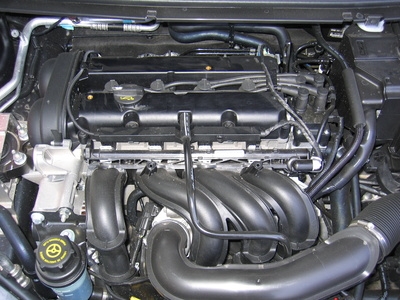
Engine oil lubricates the engine's internal moving parts, helps remove and control heat, and increases the life of the engine. Engine oil suspends dirt particles, blow-by (gases and particles produced during combustion) and other contaminants to ensure the abrasive particles don't damage sensitive engine parts. Oil leaks result in less oil being available to lubricate parts and suspend damaging particles.
Locate the source of the leak. Degrease the engine by spraying engine degreaser on the engine's dirty parts (above and below) to remove road grime and oil deposits. Rinse with water and allow to dry. If a leak location is obvious (such as from an oil pan bolt), cleaning the engine parts will determine if a secondary leak is contributing to the total oil loss.
Replace the oil pan bolt gasket. If the source of the leak is the bolt, a new nylon bolt gasket can be used. Install by sliding the gasket over the bolt, and tighten according to manufacturer specifications.
Replace the oil pan gasket. Drain the engine oil. Remove the oil pan by unscrewing the bolts holding the pan in place. Remove the old gasket. Clean the oil pan thoroughly with paper towels and brake cleaner to remove oil sludge. Remove any trace of the old oil pan gasket with a chisel or other scraping tool. Install the new gasket and replace the oil pan. Refill the vehicle with oil.
Replace the oil filter. If the oil filter seal is leaking, remove the old oil filter by unscrewing. Thoroughly clean the surface of the metal where the oil filter attaches to the engine. Install a new oil filter according to manufacturer instructions (usually requires a thin layer of new oil placed on the oil filter gasket before installation).
Add a seal sweller to the engine oil. Seal sweller additives will cause seals to expand. If the seal is degraded and allowing oil to leak by, a seal sweller will expand the existing seal to eliminate the oil leak. Seal sweller should be added at every future oil change to avoid future leaks.
Replace any leaking gaskets to fix oil leaks. If your oil leak is at a major seal (such as the rear main), removal of the engine, transmission or other components may be required to access the seal.
On some engines (such as marine engines), oil may be transferred through hoses. If the oil is leaking at a hose connection, or from a degraded hose, remove the hose. Clean the hose connection points and replace with a new hose.